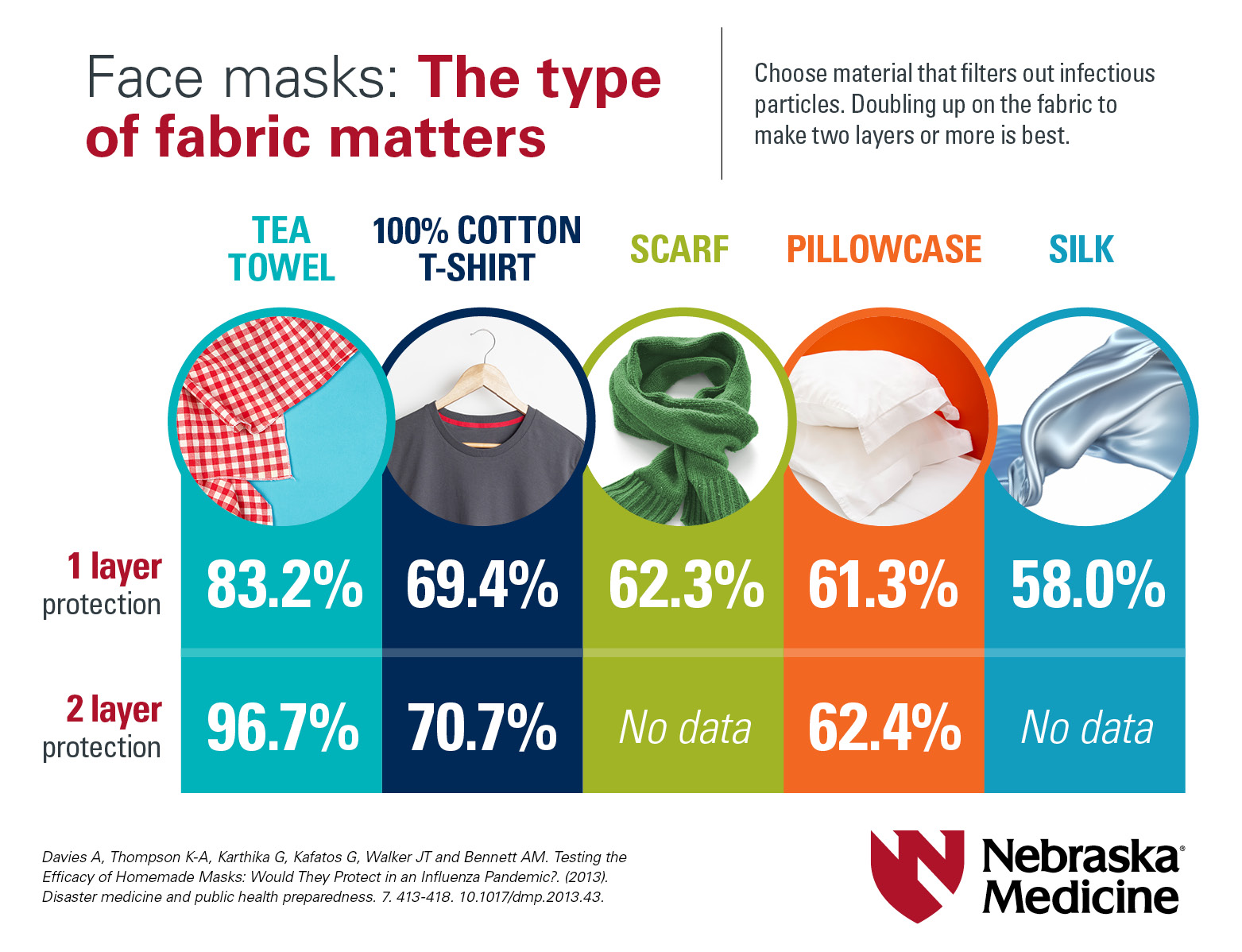
As you may have heard, the Centers for Disease Control and Prevention is advising people to wear cloth face coverings when out in the community. Before you decide whether wearing a face covering is right for you, check out this guidance from University Health Center Medical Director Heather Eberspacher, MD.
Why are face coverings recommended?
The goal of wearing face coverings is to minimize the spread from people who have COVID-19, but show no symptoms yet or from those that are actively infected and symptomatic. Put another way, wearing fabric or homemade masks isn’t likely to protect you, but can help protect others and may help slow the spread from those that are symptomatic, too.
When should face coverings be worn?
The recommendation is to wear them whenever you are out in the community, especially when maintaining a six-foot social distance may be difficult. This could include when working, grocery shopping, going outside for a walk on the trail or at the park, visiting the doctor or pharmacy and other essential activities.
What type of face covering should I use?
You can make a face covering from many common household items. Watch this video from the CDC and view the infographic to the side of this article for more information.
Do not purchase surgical or N95 masks. Frontline health care workers use these masks and other personal protective equipment to stay healthy so they can care for sick patients in clinics and hospitals. There are nationwide shortages of PPE supplies, including masks. If you’ve purchased medical face masks, please consider donating them to protect health care workers. Learn how you can donate your masks to Nebraska Medicine.
How can I wear my face covering safely?
To reduce risks to your health, follow these rules:
- Use a face covering for no more than four hours at a time, then wash in hot water and dry thoroughly before using it again
- Wash hands for 20 seconds with soap and warm water before you put on the mask
- Wash hands again after removing the covering. Do not touch the outside front part of the covering as the area is likely to be contaminated
- Face coverings are not 100% effective, so continue to practice social distancing and handwashing when you wear a mask
What are the risks?
Your face covering could infect you if you don’t take proper precautions. The two main risks are:
- Self-contamination: Unless you put on and take off the mask safely and do not adjust your mask while wearing it, the mask could infect you. Watch this short video on how to properly put on and take off a mask
- Germs love moisture: Moisture can accumulate as you breathe into the mask, potentially allowing germs and the coronavirus to settle into the mask material. Avoid this by cleaning your mask before wearing it again. The CDC has further guidelines on how to create, wear and clean face masks
If you have questions about masks, are concerned you have COVID-19 or have other concerns, contact the University Health Center at 402.472.5000.
More details at: https://health.unl.edu